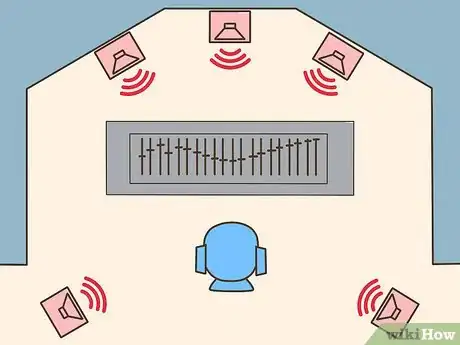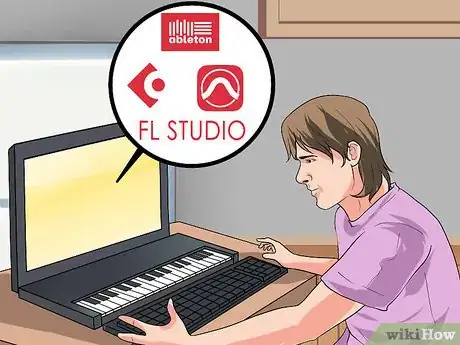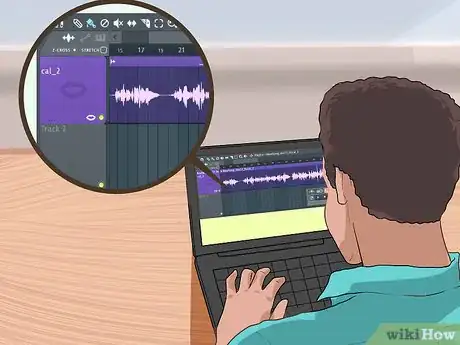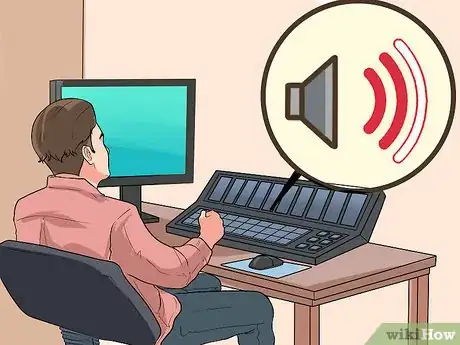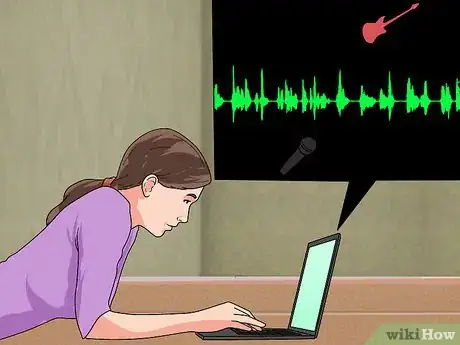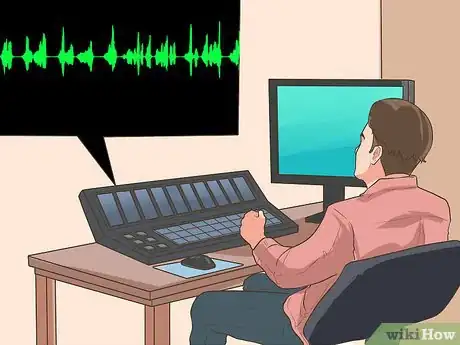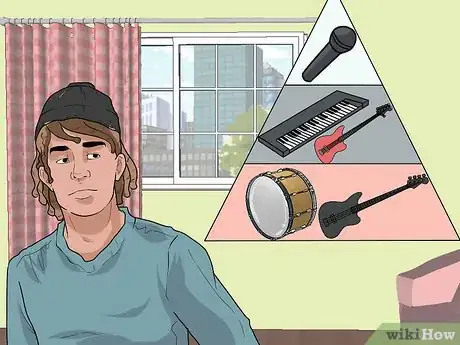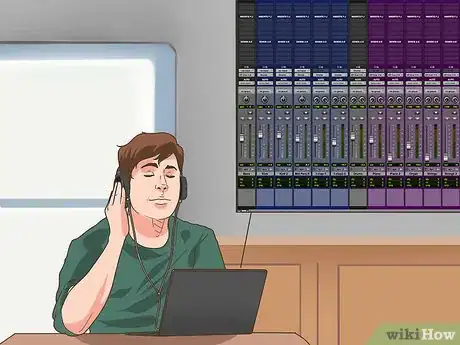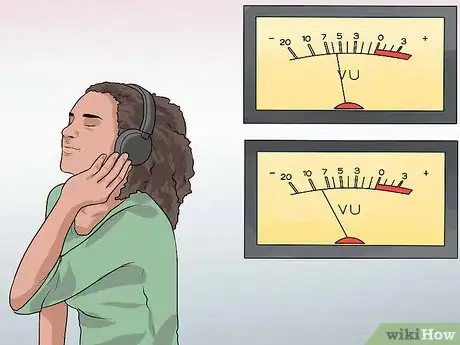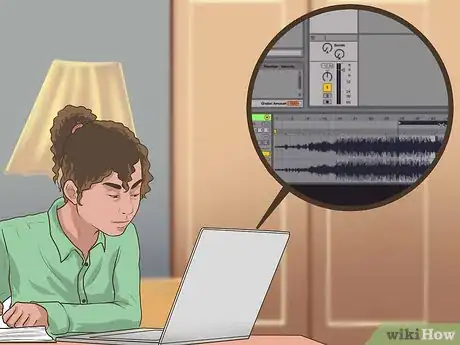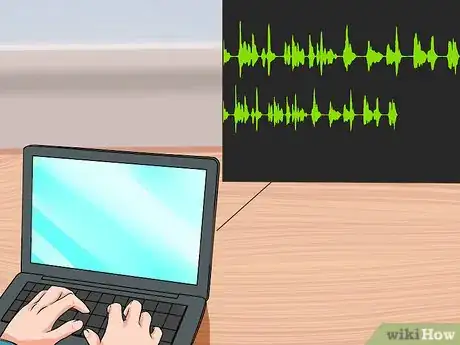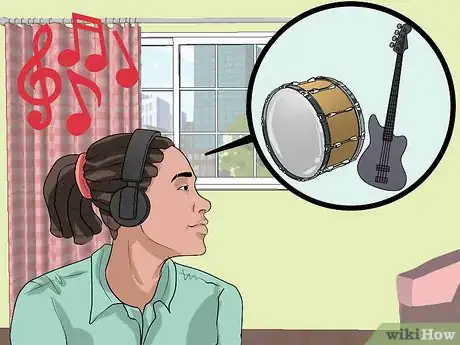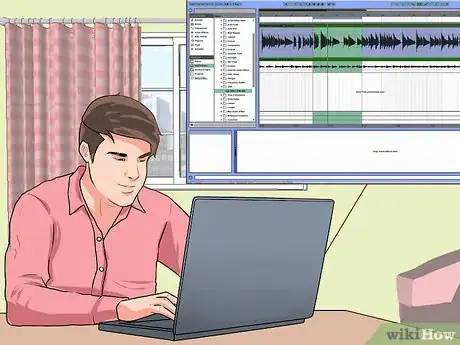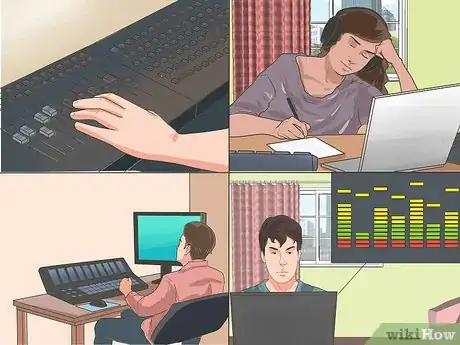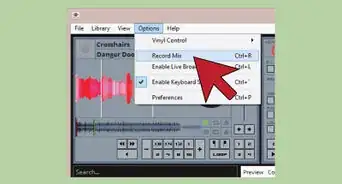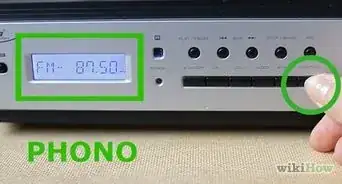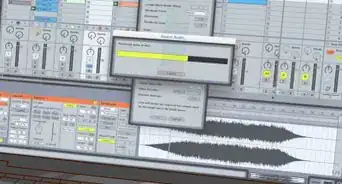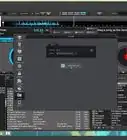This article was co-authored by Timothy Linetsky. Timothy Linetsky is a DJ, producer, and music educator that has been making music for over 15 years. He is a certified Ableton trainer and creates educational YouTube videos focused on producing electronic music. He has over 90,000 YouTube subscribers.
There are 17 references cited in this article, which can be found at the bottom of the page.
wikiHow marks an article as reader-approved once it receives enough positive feedback. In this case, 96% of readers who voted found the article helpful, earning it our reader-approved status.
This article has been viewed 211,303 times.
Sound engineering gear and software can be intimidating with all its knobs, sliders, readouts, and jargon. Fortunately, for those of you just starting out with song mixing, there are some simple steps you can take to mix your songs so they sound just like you want them to.
Steps
Equipping Yourself to Mix
-
1Optimize your room's acoustics. By creating an acoustically superior workstation, you'll be able to hear the features of the tracks you are listening to with greater detail. This will allow you to draw out the features of your tracks with greater accuracy.[1] One of the most important parts of mixing a song is knowing what to highlight and what to downplay, and being able to hear these features will help.[2] To improve your work space's acoustics:
- Be aware of room modes, or how the shape your room can impact the frequencies of your sound. Room modes have been especially known to cause difficulty with low to low-mid frequency sounds playing on your system.
- Limit bouncing sound waves. As soon as sound leaves your speakers, it will reflect off the hard surfaces in your room, which can influence the stereo and frequency of your sound.
- Balance your speaker distance from hard surfaces, which can add low frequencies to your sound when too close.
- Be symmetrical in your set-up. This will allow you to hear the distribution of the sound between speakers most clearly.[3] [4]
-
2Find the right DAW for your situation. A DAW is a digital audio workstation, and unless you have a studio at your disposal, it's likely going to be how you mix your music. There are many different kinds of DAW, some free and others costing over $800.[5] Which of these will work best for your situation is a matter of preference.[6] You'll have to look into the features of each DAW, but some popular options are:Advertisement
-
3Label your tracks for recognition. The mixer of your audio interface should be as orderly as possible. This will allow you to tweak and adjust your sound without any confusion or error. To save yourself time and improve your efficiency, you should label your tracks according to a system that makes sense to you.[9] For example, you might:
- Write out the full name like, "Snare Drum 7"
- Label according to your own abbreviations, like "SnD7."
-
4Devise a color code to improve your mix efficiency.[10] If you have multiple tracks that you are trying to mix during your session, it can be difficult telling at a glance which track is which. By color coding your tracks according to basic categories, you'll know your tracks immediately just by looking. An example of this might use:
- Purple for bass
- Blue for drums
- Red for vocals
- Orange for Instruments
-
5Save your ears whenever possible. When listening to a track over and over again, listening at lower volumes can protect your ears from unnecessary strain. Lower volume listening can also help you recognize subtle variations in instrument volume.
- A general rule of thumb: if you cannot talk over the volume of your playback, you should turn your volume down.[11]
-
6Clear your mind of distractions.[12] The creative process of mixing a song can be complicated by poor organization or outside disturbances.[13] Take steps to ensure you won't be interrupted. Turn off your phone and set an editing routine for yourself so that you can keep your focus trained on your goal of a well mixed song.
Planning Your Mix
-
1Know the rough mix front to back. The "rough mix," which is your reference, will clue you in on how you should proceed with your audio engineering.[14] You should listen to the rough mix to become familiar with the features of the song you will be mixing.
- While mixing, ask yourself: "What is the goal of the artist or producer who made the song?"
- The rough mix is also where problems with the mix will be most apparent. Take note of these features; you'll need to smooth them later in the mixing process.[15]
-
2Get the feel of the mix. Many producers and artists aim to accomplish a certain feeling or "vibe" through the expression of a mix. Listen to the rough mix repeatedly until you instinctively feel the direction of the music, its thrust, and how its component tracks work together.[16]
- When listening, start with your faders at center volume and then adjust tracks to see how each interacts with each other and the mix as a whole.
EXPERT TIPTimothy Linetsky is a DJ, producer, and music educator that has been making music for over 15 years. He is a certified Ableton trainer and creates educational YouTube videos focused on producing electronic music. He has over 90,000 YouTube subscribers.Music Producer & Instructor
 Timothy Linetsky
Timothy Linetsky
Music Producer & InstructorUse "reference tracks" in your genre to perfect your mix. Timothy Linetsky, DJ and Producer, tells us "I refer to the reference tracks and ask myself, 'Do I have way more bass than the reference tracks?' 'Is my snare not punchy enough compared to what’s standard across all these reference tracks?' 'Do I have too much low end compared to all the reference tracks?' I’m basically trying to see if I’m in the range of what’s standard in these reference tracks."
-
3Identify the features of the track you want to bring out.[17] Listen to the rough mix again and write down the unique features and key elements you hear in it.[18] You'll need to accentuate these while mixing. This is also a good point to determine the kind of atmosphere you are trying to create. An upbeat and punchy atmosphere will require a different approach from one that is distant and haunting.[19]
- You may want to use an effect, like reverb, to create fullness in a melodic line.
- For faster, more rhythmic songs, you may need to bring out the bass line during build sections.
- Vocals should be clear and distinct from instrumental parts, unless used as a background chorus.
- Background and accent vocals are often treated as part of the ensemble, not the main attraction or key feature. Your mixing should reflect this.[20]
-
4Determine relationships between your tracks.[21] You should note parts that complement each other, like rhythm guitar tracks that create a "hand-off" every few beats. These will need to be highlighted or polished later for greater effect. If you cannot see the purpose a particular track, that may be a sign that you don't need it at all.
- Use your fader to subtract tracks to see the impact these have on the mix as a whole.
- Isolate parts of your mix that sound unclear and find the root track(s) causing the distortion. Later, you will need to balance the offending track, or maybe remove it completely.
-
5Listen to similar music. By listening to similar songs you can hear how instruments are utilized to build a track. You may also get completely new ideas for effects that you could make use of in your own mix.[22] Drawing inspiration from other songs can be a powerful tool for your mixing process.
-
6Plan to mix from the bottom up. It may help for you to think of your song as a pyramid. The lowest, heaviest parts (bass drum, bass guitar, etc.) form the foundation of your mix. The middle segments are filled out with guitars, keyboard, and other percussion. Lastly, your vocals and lead parts create the top. While learning the ropes, your mixing process should generally follow this order.
- Working from the bottom up can help create a more balanced sound and better defined EQ.[23]
Balancing Volume and Routing Tracks
-
1Evaluate the quality of your tracks while balancing volume. Poor track quality might not seem like a big deal in the beginning, but when you start adding more tracks to your mix, it can have a multiplier effect. This can be devastating to the quality of your mix as a whole. But since you'll be listening to each track on its own while balancing volume, you'll have an ideal chance do a quality check.[24] [25]
- Replace low quality tracks when you are able to save yourself work later on, when you'll have to smooth out negative features.
-
2Balance the volume between tracks.[26] Gain staging is one of the most important aspects of mixing.[27] If a song is mixed "too hot," the volume level is too high and the upper or lower portions of the frequency is lost, causing a phenomenon called "clipping." Use your audio interface to listen to each track individually, and then adjust the volume.
- By keeping your sound levels low, you can allow yourself more room to fine-tune the mix to your liking.
- A conservative sound level to start with is -10 dB on the master fader.[28]
- Generally, you can protect yourself from clipping by keeping your tracks out of the top limit, expressed by the red zone on your master.[29]
-
3Group sounds together with a bus. When you group similar sounds together into a single track it's referred to as "bussing."[30] This means that you can apply processes to all the tracks contained in your bus at the same time.
- You'll have to experiment with your particular tracks to find which can be grouped together in a bus.
-
4Contemplate panning. Panning is the the movement of sound left and right through the stereo field of your mix. You should have a general idea of how you'll use panning so that when it comes to placing your instruments you can work quickly. Plan on organizing heavy and low frequency sounds, like your bass, toward the center of your stereo field.[31]
Processing Your Sound
-
1Experiment with equalizers.[32] EQs can be an incredible tool to focus the sound of your instruments. With EQs you can either strip or boost high or low frequencies, which can be particularly useful with drum kits. When drum kit sounds are recorded, the vibrations caused by its low frequencies can resonate with other parts of the kit. This might cause a rumble in the kits snare, for example. These sounds can be "rolled off" at the low end with an EQ, creating a purer sound.
- Where percussion is concerned, snare drums generally sound more powerful with a boost in the lower frequencies, whereas hi-hats and toms often sound snappier and punchier with lower frequencies thinned out.
-
2Use compression tools to ensure consistent volume. A compressor limits the amount of frequency expressed in your mix. It will raise the volume of quiet parts, lower the volume of loud parts, and maintain the volume of sounds in your ideal range.[33] Due to human error, you can expect that no single instrument will not be perfectly constant throughout an entire recording. Compression can smooth these irregularities automatically for you.
-
3Check the sound of the drums and bass. Drums and bass form the rhythmic foundation of your song, so be sure you set aside some time to give these a careful listen. Lower frequency sound can be overpowering if you're not careful.[34] Every part should sound distinct, but also cohesive with the whole. If one instrument is excessively bright or dark, it will sound out of place.
- Think of the tracks of your mix as members of a choir: each part is separately appreciable, but its goal is work together as a collective.
-
4Use noise gates. Noise gates cut out all noise that doesn't reach a minimum volume. This can be highly useful when a recording has been done in an area with background noise. The buzz of this noise can easily be cut out with a gate.[35]
- For specific instruments that aren't as regularly occurring in your mix, it may be easiest to lower your fader.
- Filtering out unwanted lower volume percussion can be unreasonably difficult when trying to time fading with each sound's “punch." Gate's are ideal for this situation.
- Experiment with noise gates to get a cleaner, crisper sound from your mix.
-
5Play with your panning. How sound moves through the stereo field has a definite effect on the sound you produce in your mix. To find the perfect balance, you'll have to experiment with how you distribute your tracks. Beginners should start with a centered bass part, but then might:[36]
- Switch off between sides with rhythm guitar and percussion
- Place a keyboard track so it is slightly off center.
- Add other tracks throughout the field to give your mix a richer, more realistic quality.[37]
-
6Add effects. The chorus effect, for example, will add layers of slightly different timbres and intonations to a track, making it sound like multiple instruments are playing. As a general rule, this effect is useful for electric keyboards and guitar parts. Some other effects you might make use of while mixing:
- Reverb - creates a vibration in the sound, often added to guitars and voice to mask less desirable frequencies and create fullness.
- Delay - sometimes called "echo," creates one or more defined sound segments and repeats that segment.[38]
-
7Use automation to create a more musical song. There are many different kinds of automation you can be use to improve the musicality of your mix. For example, you might automate your master bus to create louder choruses than your verses. This would create a more prominent chorus in your mix.[39]
- You can also automate effects returns, which can be useful if you want a reverb or a delay to be less prominent in certain sections of a song.
-
8Put everything together. While you're using your EQ, noise gates, and other effects, you should constantly be listening to your entire production. As you do, make small adjustments to each track while always keeping the whole in mind. With each change, listen to you mix anew. Even if individual parts sound great, the complete product has to sound great as well.
-
9
Community Q&A
-
QuestionWhat is the difference between a plugin sound and a recorded sound?
 Community AnswerA recorded sound is a sound which you recorded using a microphone and it was performed live like vocals. The plug-in sound is the sound made virtually using a VST, like a synth or a sampler.
Community AnswerA recorded sound is a sound which you recorded using a microphone and it was performed live like vocals. The plug-in sound is the sound made virtually using a VST, like a synth or a sampler. -
QuestionIs Garage Band # sufficient?
 Community AnswerAny recording platform is sufficient if it conveys a decent facsimile of your music vision.
Community AnswerAny recording platform is sufficient if it conveys a decent facsimile of your music vision. -
QuestionWhat software applications can I use to mix songs?
 Community AnswerVirtual DJ 8 is the easiest out there, and it's free. If you have a compatible DJ console, you can use Serato Intro, which is free as well.
Community AnswerVirtual DJ 8 is the easiest out there, and it's free. If you have a compatible DJ console, you can use Serato Intro, which is free as well.
References
- ↑ http://modernmixing.com/blog/2013/06/05/investing-in-your-room-acoustics/
- ↑ http://www.audiominds.com/mixing.html
- ↑ http://modernmixing.com/blog/2013/06/05/investing-in-your-room-acoustics/
- ↑ http://artsites.ucsc.edu/EMS/music/tech_background/TE-02/modes/Modes.html
- ↑ http://ehomerecordingstudio.com/best-daw-software/
- ↑ http://www.wirerealm.com/guides/best-music-production-software-daw
- ↑ http://ehomerecordingstudio.com/best-daw-software/
- ↑ https://www.landr.com/en/how-to-mix
- ↑ http://modernmixing.com/how-to-mix-music/
- ↑ https://www.landr.com/en/how-to-mix
- ↑ http://www.audiominds.com/mixing.html
- ↑ http://modernmixing.com/how-to-mix-music/
- ↑ http://www.music-production-guide.com/music-mixing.html
- ↑ http://modernmixing.com/how-to-mix-music/
- ↑ http://www.audiominds.com/mixing.html
- ↑ http://www.audiominds.com/mixing.html
- ↑ http://modernmixing.com/how-to-mix-music/
- ↑ http://www.audiominds.com/mixing.html
- ↑ https://www.landr.com/en/how-to-mix
- ↑ http://www.tiem.utk.edu/~gross/sounden2.txt
- ↑ http://modernmixing.com/how-to-mix-music/
- ↑ http://modernmixing.com/how-to-mix-music/
- ↑ http://theproaudiofiles.com/5-ways-to-approach-the-beginning-of-a-mix/
- ↑ http://modernmixing.com/how-to-mix-music/
- ↑ https://www.landr.com/en/how-to-mix
- ↑ https://www.landr.com/en/how-to-mix
- ↑ http://modernmixing.com/blog/2011/01/11/gain-staging/
- ↑ http://modernmixing.com/blog/2011/01/11/gain-staging/
- ↑ http://blog.landr.com/7-tricks-to-create-headroom-and-how-it-will-save-your/
- ↑ https://www.landr.com/en/how-to-mix
- ↑ https://www.landr.com/en/how-to-mix
- ↑ http://modernmixing.com/how-to-mix-music/
- ↑ https://www.landr.com/en/how-to-mix
- ↑ http://www.soundonsound.com/sos/nov99/articles/bigbass.htm
- ↑ http://modernmixing.com/blog/2014/01/18/mixing-clarity/
- ↑ http://www.soundonsound.com/sos/nov99/articles/bigbass.htm
- ↑ http://www.uaudio.com/blog/studio-basics-mixing-stereo/
- ↑ http://www.behindthemixer.com/reverb-or-delay-do-you-know-difference/
- ↑ http://transom.org/2014/pro-tools-3-mixing-basics/
- ↑ http://modernmixing.com/how-to-mix-music/
- ↑ https://www.landr.com/en/how-to-mix
About This Article
Once you adjust the frequencies in your songs with an equalizer, or EQ, use compression tools to give your songs a consistent volume. Use noise gates to cut out background noise in your recordings. Then, experiment with the different effects on your digital audio workstation, like chorus and reverb effects, to make them sound better. For more tips on mixing your own songs, like what equipment you should use, keep reading!
